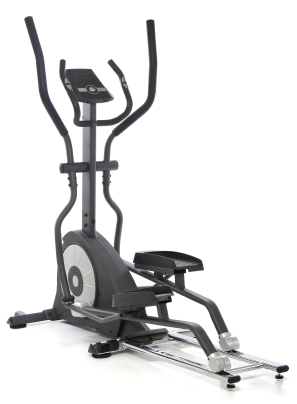 For years, the elliptical machine has been a gym favorite of many men (and women) for a stationary cardio workout, offering more advantages than using many other kinds of machines. However, over the last several years, the trampoline has been gaining more visibility as an exercise method, not just a fun time for energetic kids. Personal trampolines are now fixtures in home and gym workouts, with some gyms even offering trampoline classes right along with elliptical and spinning cardio workouts. Both are great–but how do the trampoline and elliptical machine measure up against each other?
For years, the elliptical machine has been a gym favorite of many men (and women) for a stationary cardio workout, offering more advantages than using many other kinds of machines. However, over the last several years, the trampoline has been gaining more visibility as an exercise method, not just a fun time for energetic kids. Personal trampolines are now fixtures in home and gym workouts, with some gyms even offering trampoline classes right along with elliptical and spinning cardio workouts. Both are great–but how do the trampoline and elliptical machine measure up against each other?
Calories
When it comes to sheer calorie burning capability, the elliptical is the method of choice. According to Fitness Magazine, an elliptical workout will burn around 575 calories per hour, whereas a job on a trampoline for the same hour only burns around 290 calories.
Impact
A trampoline workout is high-impact: even moderate jumping and landing on the tramp will jar the joints (especially the knees and hips) and the back. Because of this, the trampoline is not recommended for people with bad backs, or who have or are recovering from joint injuries to the lower body, particularly the knees. Contrastingly, the elliptical machine offers an excellent low-impact exercise session, meaning that it gives the benefits of sports conditioning, sans the joint-jarring action. Always consult your physician prior to undertaking any exercise regime, especially during recovery from injury.
Home Gym
Both the trampoline and elliptical give a cardio and weight-bearing exercise session, so they are both excellent additions to a home gym. Before going out and splurging, check a few things, though, including your budget, the amount of space you have available in your home gym in terms of floor space and ceiling clearance. Trampolines come in many sizes, even tiny portable versions known as rebounders, which are used in fitness classes. These are much less expensive than a new or even used elliptical machine. Ellipticals are usually large, weigh more than a hundred pounds, and are difficult to move. Both exercise machines need clearance to use safely: the elliptical needs more floor space, but trampolines have the ceiling clearance requirement. Make sure if you buy a trampoline you’re not going to crash into the ceiling of your apartment during a workout—that’s not very conducive to fitness!
Physically Challenged Adults
Elliptical machines are, by far, more accessible for people with physical challenges and impairments than trampolines. It’s possible to adapt an elliptical for use by disabled or partially disabled people by adding steps, deeper foot beds, and side rails. Trampolines, due to their very simplicity of design, can’t be modified.
So the verdict? For the best overall workout, the elliptical is usually the better choice for a cardio workout. That doesn’t mean that trampolines aren’t great—it just means that an elliptical machine is more versatile and accessible.
